The Best 3-Board Hawaii Quiver Of My Life
Sorry, Jack and Kolohe. You blew it.
Jack and Kolohe blew it.
Or maybe T&C/Glenn Pang blew it by submitting a Stab in the Dark board that strayed from their traditional design theory. It’s hard to say.
The only thing I know for sure is that Glenn Pang shaped my favorite 3-board Hawaii quiver — ever. And it’s not even close.
You may be familiar with Stab’s 3-board quiver series, wherein a member of our editorial team orders a batch of boards from a shaper of a specific region and reviews how well (or not) those boards handle the local conditions. In my opinion, no place is better suited to this practice than Oahu’s North Shore, for both its variety and quality of waves, plus the sheer number of world-class shapers that exist in the region.
In my last three Hawaii seasons, I’ve tested 3-board quivers from Arakawa, Pyzel, and now T&C/Pang. All the quivers had their sweet spot, but none came close to the Pangs in terms of overall performance across the myriad waves one might encounter on a six-week trip to Da Rock.
In other words, this winter was my best Hawaii season ever. But we’ll get into that shortly.
First, let’s settle this Stab in the Dark business.
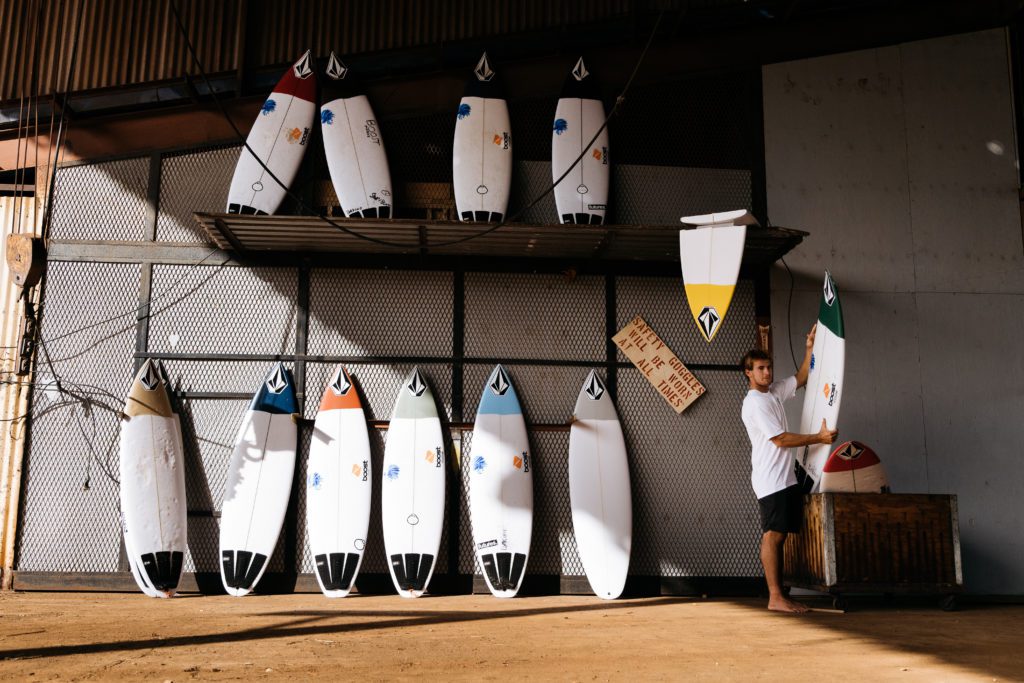
This winter, T&C celebrated 50 years of Oahu-based board-building. For those who haven’t been to the islands, their factory (originally in Pearl City, now in Wahiawa) is smack dab in the middle of the island, an iconic connection point between “Town” (the South Shore) and “Country” the North Shore.
Clever name. Also, the real estate is probably much cheaper there than it is on the coast.
Founded by Craig Sugihara in 1971, and run today by his son, Ryan, the brand has seen a recent resurgence thanks to the re-popularization of neon (no doubt driven by Australia’s high-viz knights), their increased focus on social media marketing, and fruitful collaborations with larger brands like Vans.
Apparently, their collab high-tops sold out…twice…and counting.
For these reasons, not to mention that T&C’s historical roster holds more Hawaiian icons and World Champs than any other board brand, and the fact that their head shaper, Glenn Pang, is among the most revered shapers on Oahu, T&C got its first-ever invitation to Stab in the Dark.
It did not go well.
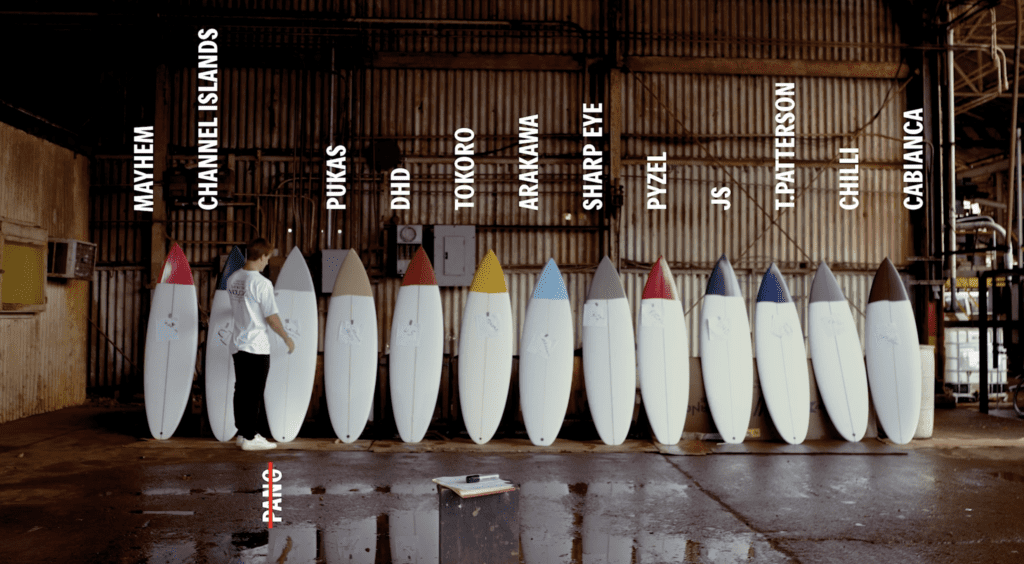
This year in SITD, we decided to implement a new, somewhat controversial rule: the mystery surfer would have to eliminate one board at the original reveal, based strictly off appearances.
No, he wouldn’t even get to ride it.
By now, you can probably guess which board came to be known as Unlucky 13. The light gray dip with the hip in the tail just didn’t suit Jack’s eye, so he reluctantly pulled it off the line and chucked it in the metaphorical bin.
Of course, we were never gonna let this board go completely unridden. We always planned to have someone Jack’s size, and of a similar A-list ability, sample Unlucky 13 and come back to report one of two things. Either: A) Jack blew it, or B) He made the right call.
Kolohe Andino got the call up to be our second-hand sampler, and he tested the Pang at very fun-looking Backdoor and plum-average Rockies. Despite knifing a few glorious tubes and letting the fins drift frivolously above the lip, Brother ultimately decided that Jack had made the right call — the Pang was never going to be a finalist.
Based on Brother’s surfing in that edit, he’s probably right. The board was catching in odd places and didn’t seem to hold a carve. At times it was actually hard to watch.
So how is it that an underperforming SITD invitee could make my favorite Hawaii quiver to date? Are T&C boards designed for the advanced-intermediate surfers among us? Has Glenny P lost his elite touch?
Hardly.
Not a week after episode one of Stab in the Dark aired, Pangs went one (Brisa Hennessy) and two (Kanoa Igarashi, who also had the highest average heat score of the event) at the Sunset CT, dismantling any notion that Pang boards belong anywhere but under the feet of the world’s best.
When it comes to SITD, well, it turns out Glenn was just trying something new.
“[The board I submitted for SITD] was the second board I made. The first board was our normal, good wave, high-performance shortboard. And then I kinda was thinking about it like… ‘Ahhh, I don’t know if that’s good enough for Stab in the Dark. I want to do something different.'”
Oh, Glenn! I promise it was good enough.
“I’ve been working on a couple of different things with Kekoa Bacalso, so the SITD board was a fusion of a couple different boards we’ve been toying with,” Pang concluded.
A bold move, Cotton. And it didn’t work out well for him.
As for myself…
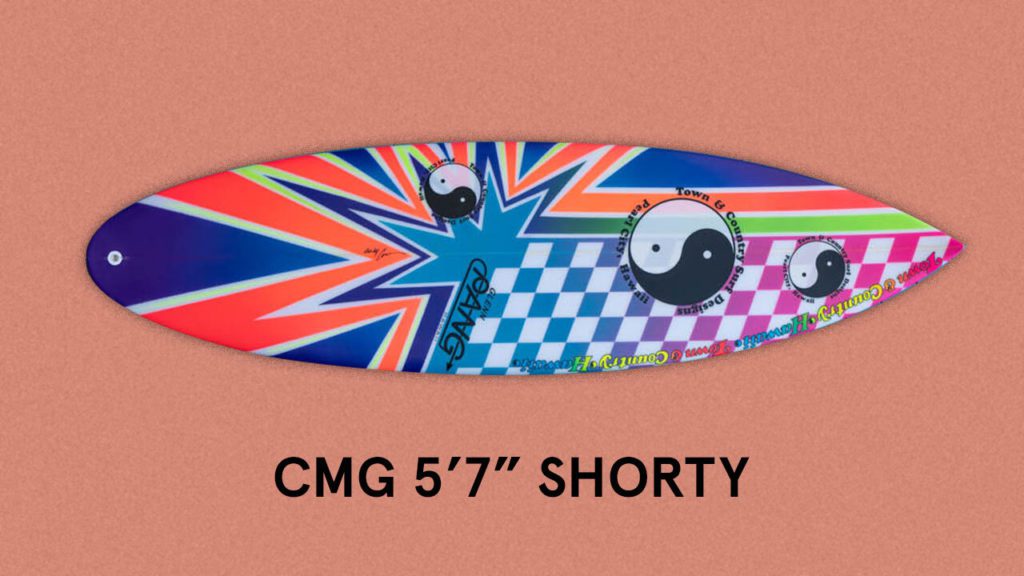
CMG (An HP shorty)
Before this trip, I didn’t think shortboards worked in Hawaii.
As in, you might have a few fun waves and connect some nice turns, but when the wave that is somehow three feet bigger than the rest inevitably comes in, you’re fucked — babying it off the bottom or skipping out off the top, guaranteed.
That was just surfing in Hawaii to me — feigning pleasure until you’re proven (yet again) to be overpowered and under-gunned. Yay.
Then I got this board from Pang, and holy shit, it held.
I was surprised, too, because the board has fuller features — a wide-ish nose, thick-ish rails, and a bit of a belly. It looked more like something you’d ride in fun, softer surf — not raw Hawaiian juice.
Alas, the first few weeks of my stay were characterized by smallish northerly wind slop. Backdoor had turned into a sand-covered point, and while not treacherous in the traditional sense, it still packed plenty of punch. The CMG gobbled it up and begged for more.
On top of this board’s ability to hold, the CMG also had incredible flow. It was smooth from rail to rail, covered transitions with ease, and never seemed to push water. Dare I say, it’s a high-performance shortboard that’s actually easy to ride.
When I first got this board, I was pretty self-conscious about walking down to the beach, let alone paddling out on the thing. The paint job is pretty darn loud — especially for a wannabe-pro-surfer-media-type to be flaunting along the world’s most visible stretch of sand.
But after my first session on the CMG, I found myself strutting down the beach with my chin raised and my chest puffed to the sky.
Crazy what a good board can do for your confidence.
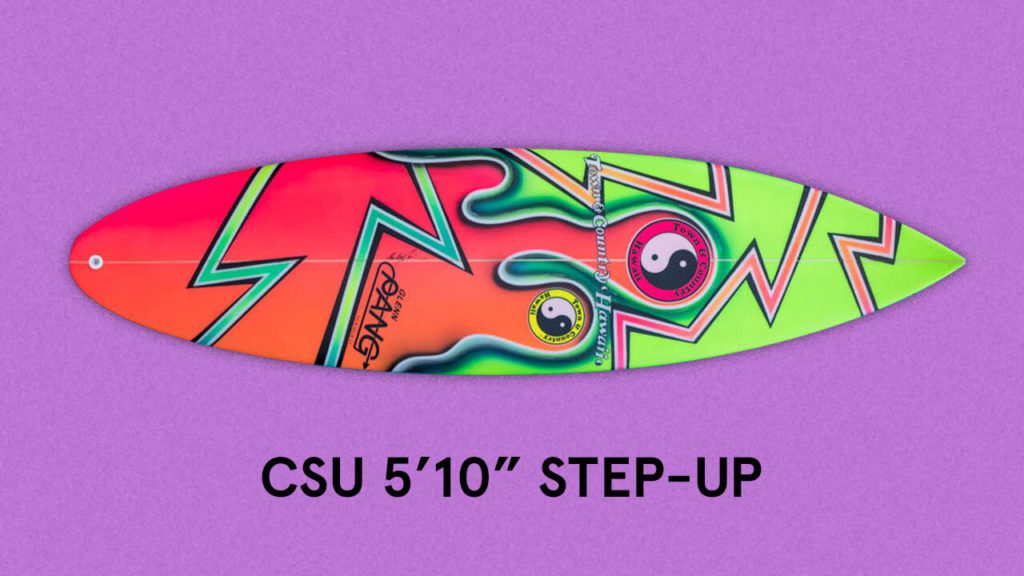
CSU (A thin-lipped step-up)
If the CMG was a little on the beefy side, this board was a skirt steak. Thin, taut, and tailor-made for searing.
As far as a (slight) step-up goes, this one falls more into the Performance than Packing Pits category. While it doesn’t paddle especially well (on account of its slimness), the CSU is incredibly adept on the face of the wave, providing a sense of total control and effortless speed management.
But also, worst-case scenario, you paddle your ass off, give Eli Hanneman the stink eye and force your way into a tube.
My last session on this board is one I won’t soon forget — 3-4 glassy peaks at a famously uncrowded (and semi-secret) spot that I refer to as “Rockies without the ego”.
Knowing it was my last session in Hawaii, and that I would soon be heading home to sub-freezing temperatures, a mostly flat ocean, and a surprise 14-day covid-conjured quarantine (woo!), I was voracious — catching everything that moved, smashing lips with resentment, and squeezing inside any hole that would have me.
No photos, as the rule goes, which is probably for the best. Like a sailor having mercilessly harpooned a whale in the days of yore, I’d rather the memory of my performance grow over time, not deteriorate due to so-called “video evidence.”
Of the three T&C boards I tested, I would say the CSU was probably my least favorite. But that’s like trying to pick the worst seat in first-class.
Now, onto seat 1A…
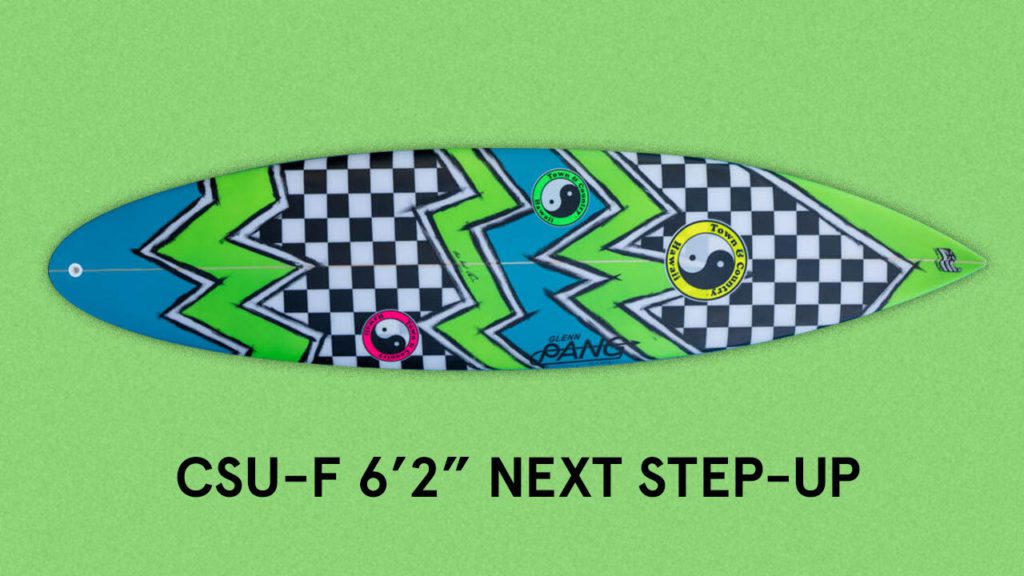
CSU-F ( A next step-up)
See that innocuous, hyphenated ‘F’ in the board model’s name? I’m convinced that it’s singularly responsible for the best Hawaii season of my life.
Unlike T&C’s “standard” CSU model, the CSU-F (which I’ll wager stands for ‘full’) is thicker in the middle than it is along the rails, creating something of a domed deck.
What is this, some podiatrist-prescribed feature for surfers who need arch support? Fortunately, no. It’s all about paddle power.
You’ve heard it anywhere from once to a thousand times, depending on whom you surround yourself with and their ideals: foam under the chest helps us get into waves better. While I love nothing more than to play the contrarian, it’s hard to deny the sheer number of quality, plus-sized (for me) waves that I finagled my way into this year on this little 6’2.
And here’s the thing you won’t see in this video — the board turns like a motherfucker. Surfed it at Sunset, Haleiwa, and even large Rockies. I was shocked at how maneuverable it was for a board that covered water like a submarine missile.
But ain’t that the beauty of the domed deck? It’s the best of both worlds — foam where you want it, and rails that you could slide beneath a poorly-engineered fence.
Knifing drops and hooking carves are both on the table, right there alongside the spam musubi.
Also, for what it’s worth, I don’t know how this board is still in one piece. It took some atrocious poundings this winter, from me putting it in bad positions on the wave, to me putting it in even worse positions paddling out. On two occasions, a 6-foot Pipe wave broke directly on the poor thing, and not a single crease can be found on its gorgeous form.
I have half a mind to hang this one in the rafters and show it to my kid someday.
But then I think, nah, probably not.
Til next year!
PS: Comment below which Hawaiian shaper you’d like to see 3-board-quiver-tested in 2022/23, and we’ll see what we can do.
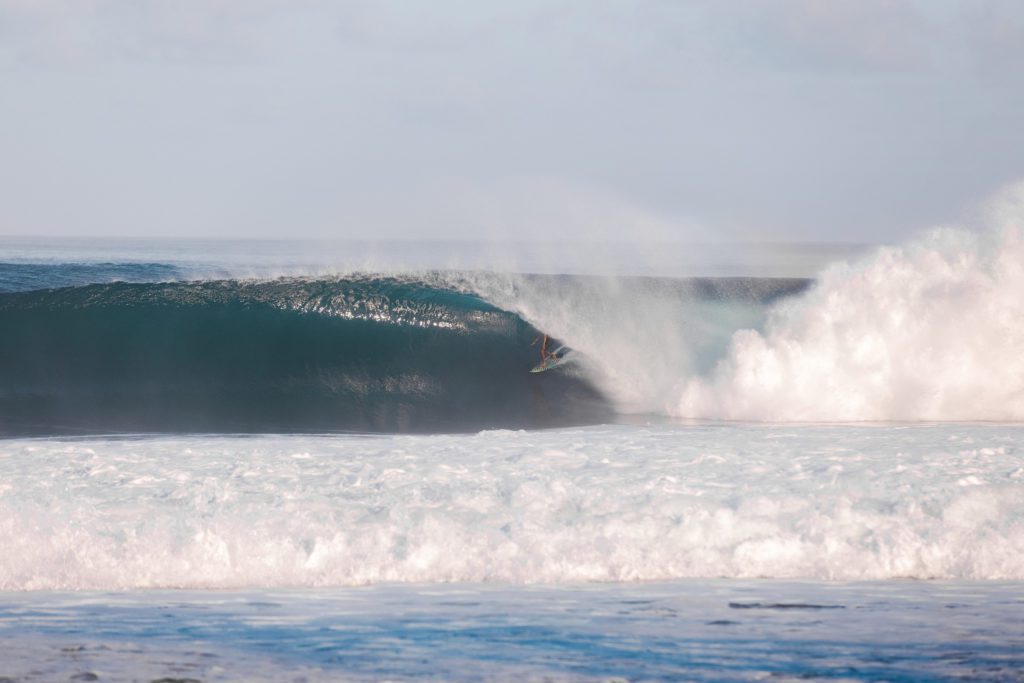



 Apr 25, 2024
Apr 25, 2024
